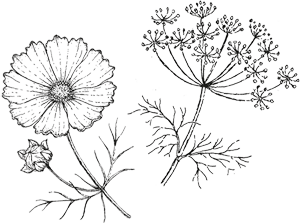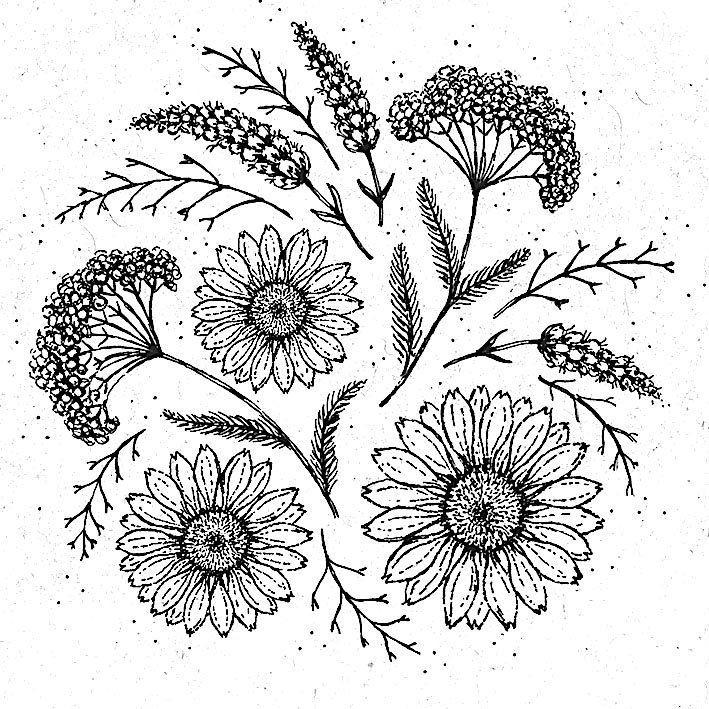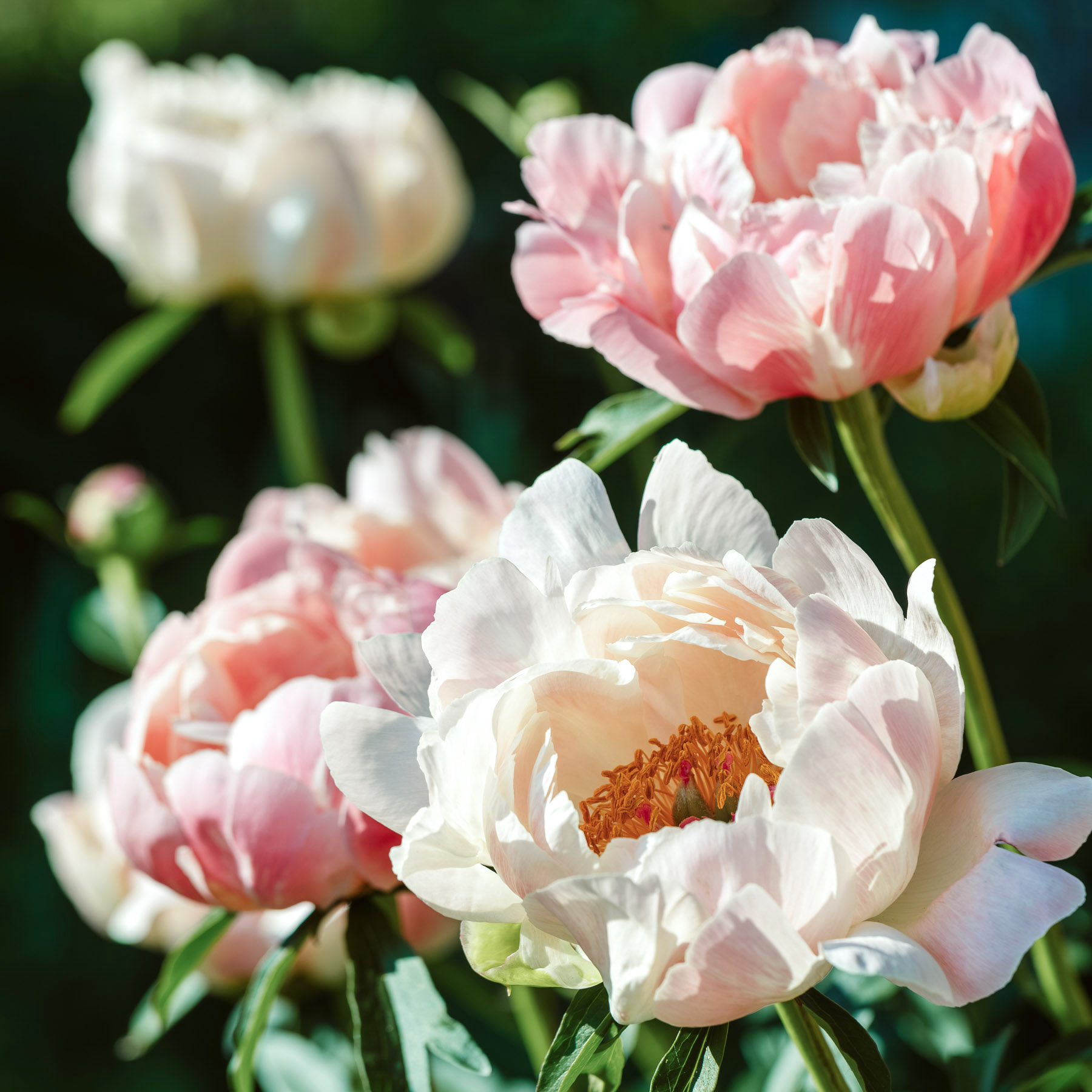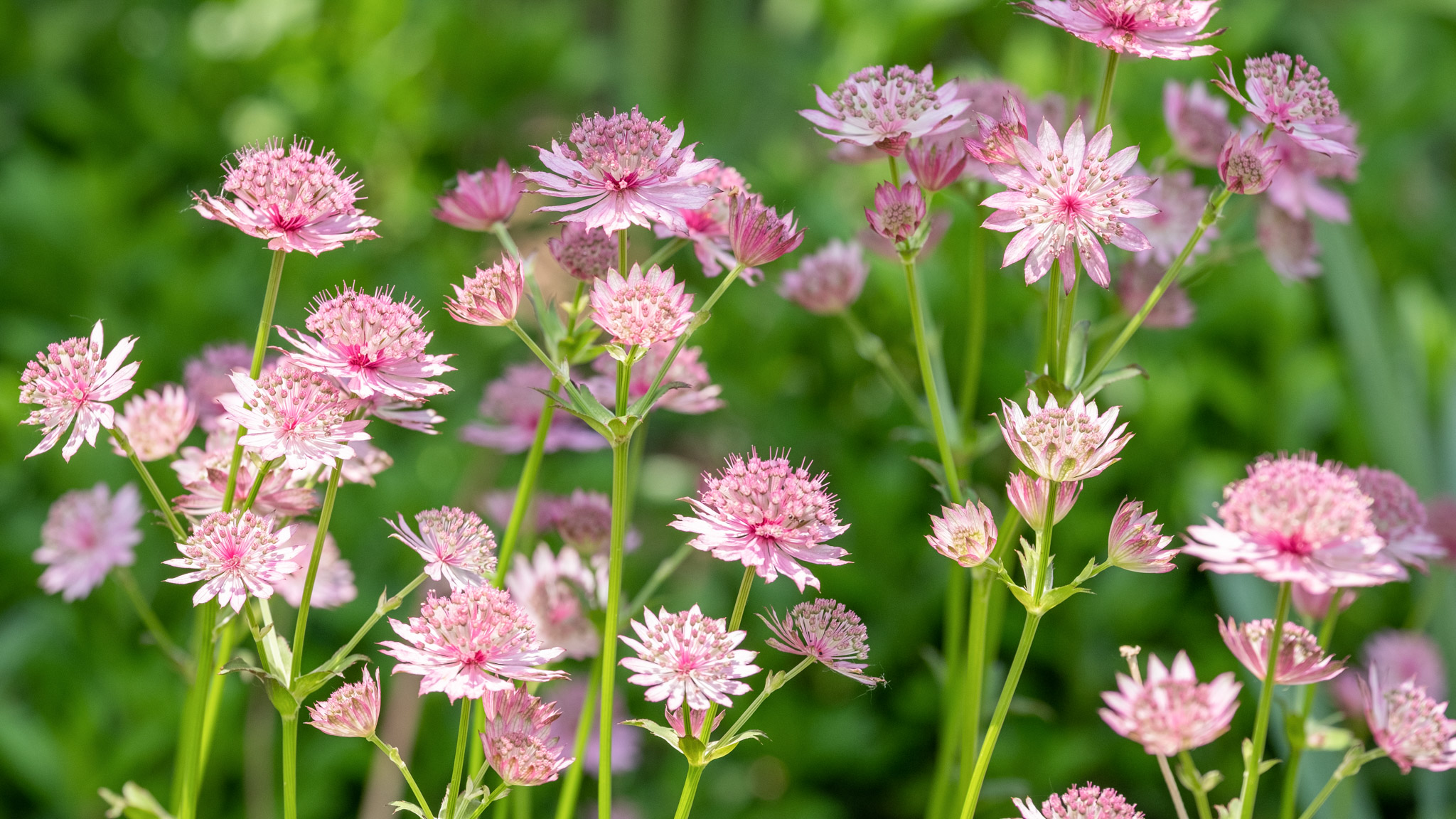
Planting, caring for and harvesting masterwort
Easy-care ornamental perennials for the garden & vase!
Masterwort, also known as Astrantia major, combine a dainty, graceful appearance with exceptional robustness. They are absolutely easy to care for and make it very easy for the gardener, as they feel at home in almost any garden and thrive in all their splendor. With their delicate, star-shaped flowers in soft shades of white, pink or red, framed by fine, green sepals, they bring an elegant touch to any garden and are perfect for semi-shady spots or locations that are not too dry. Definitely a must in every garden!
Best time to plant masterwort
Spring and early summer is the ideal time to plant star coneflowers in your flower bed. The young perennials then have enough time to establish themselves before the hot summer days arrive. Ideally, you should plant your masterworts between March and June, as soon as the first rays of sunshine warm the ground and the nights are no longer so cold.
Alternatively, fall is also a good time to plant masterworts. Here you can plant them while the soil is still warm and the temperatures remain mild. This gives the plants the chance to root well before winter and sprout vigorously next spring.
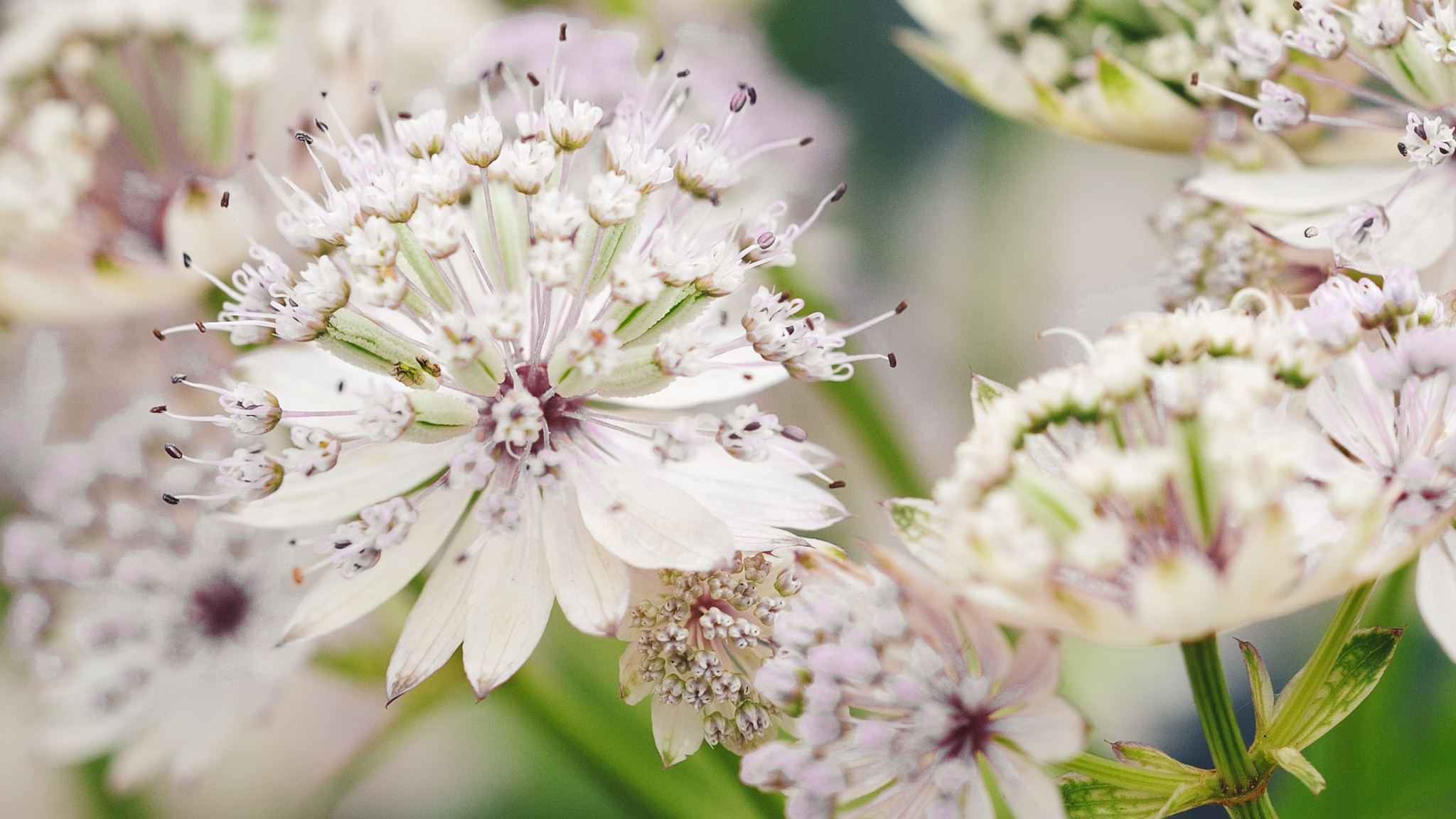
Planting masterworts
Masterworts prefer semi-shady spots that are protected from strong midday sun. The soil should be rich in humus, moist and well-drained so that the plants can thrive. For planting, you should dig a hole that is about twice the size of the root ball of the star umbel. Loosen the soil in the hole a little and mix in compost or organic fertilizer if necessary to improve the nutrient supply. Place the star coneflowers in the hole so that the root ball is flush with the soil.
Make sure that the plants are about 30 to 40 centimetres apart so that they have enough space to grow. After planting, you should water the plants well so that the soil settles around the roots. Masterworts are not only beautiful to look at, they are also useful for the garden as they provide food for insects such as bees and butterflies. They are also long-lived and form dense, attractive clumps over time.
Good to know: Star coneflowers are remontant perennials. So if you cut them back after the first flowering in summer, you can look forward to a second flowering in early fall (around September)!
Caring for and harvesting masterwort
Masterworts are extremely easy to care for. However, you should water them regularly after planting, especially during dry periods. Keep the soil evenly moist, but avoid waterlogging as this can damage the roots. Mulching is a great way to retain moisture in the soil and suppress weeds. A layer of bark humus is perfect for this. Feed your star coneflowers with an organic fertilizer during the summer months, they will thank you with abundant blooms.
In early spring, you should remove faded flowers to encourage the plant to produce new ones. Star coneflowers are hardy and take root during the cold season, but they will still appreciate a blanket of brushwood or foliage in very low sub-zero temperatures.
But star coneflowers are not only an absolute eye-catcher in the garden. They also look great in a vase. The best time to harvest them is early in the morning. Use sharp scissors and cut the stems at an oblique angle (water is better absorbed this way). Remove leaves from the bottom of the stems to prevent rotting in the vase. With the right care, you can enjoy the sight of your masterworts in the vase for up to 10 days.
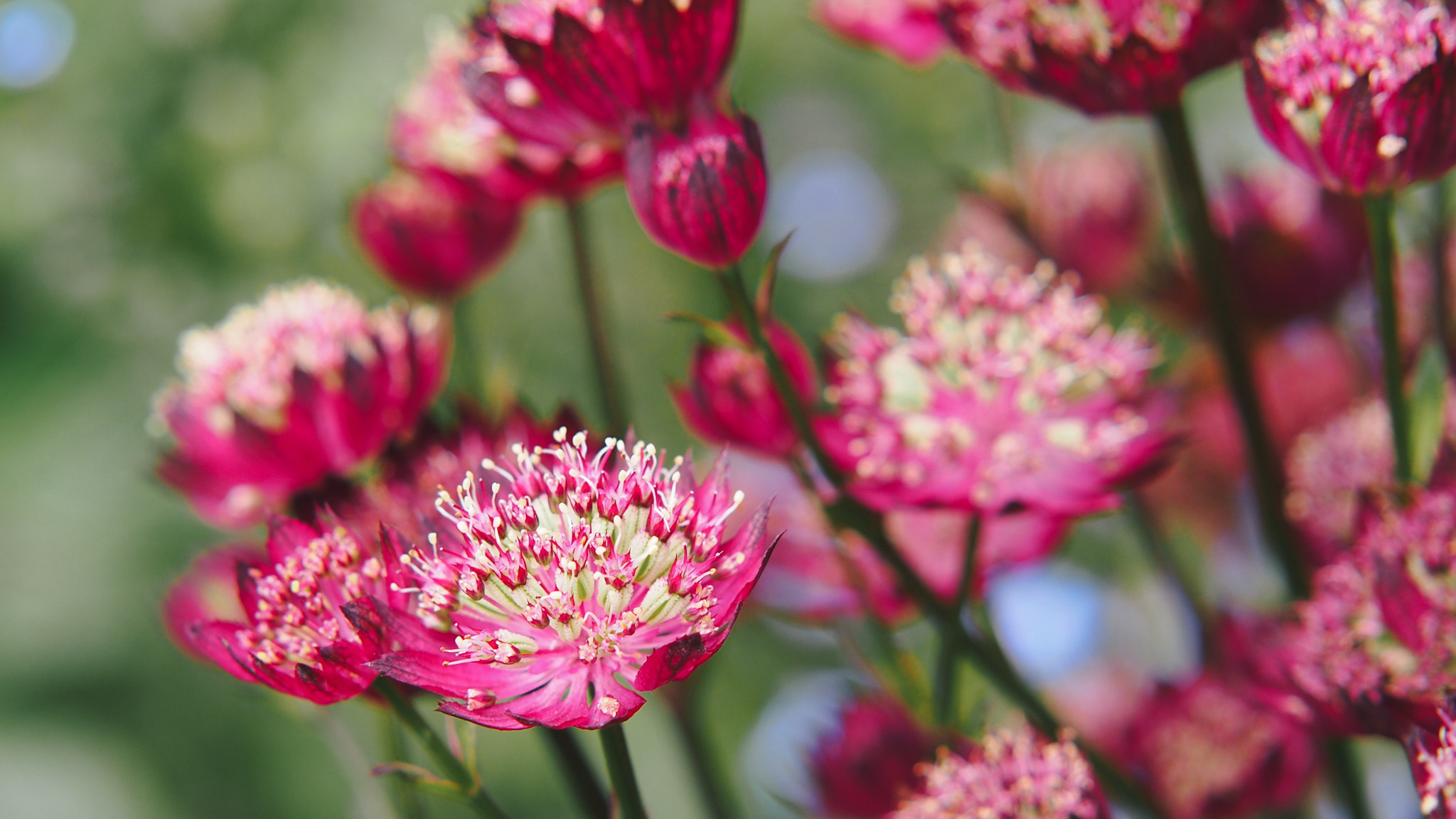
Combinig Masterwort
Masterworts are wonderful companion plants and are particularly suitable for the middle or foreground of your bed. They combine wonderfully with other perennials that also thrive in semi-shady areas. For example, a combination with cranesbill, foxgloves, columbines or funkia creates a particularly beautiful picture.
Newsletter
Jetzt anmelden und über 200 Planungskarten für deine Beetgestaltung downloaden!

Erhalte regelmäßig hilfreich Gartentipps, besondere Vergünstigungen und werde immer als Erste benachrichtigt, wenn unsere Blumen in der Saison online gehen! Außerdem bekommst du zusätzlich unsere digitalen Planungskarten. Du kannst sie ausdrucken und damit kinderleicht dauerblühende, pflegeleichte Beete planen! Bitte prüfe nach der Anmeldung auch deinen Spam-Ordner für den Bestätigung-Link.
